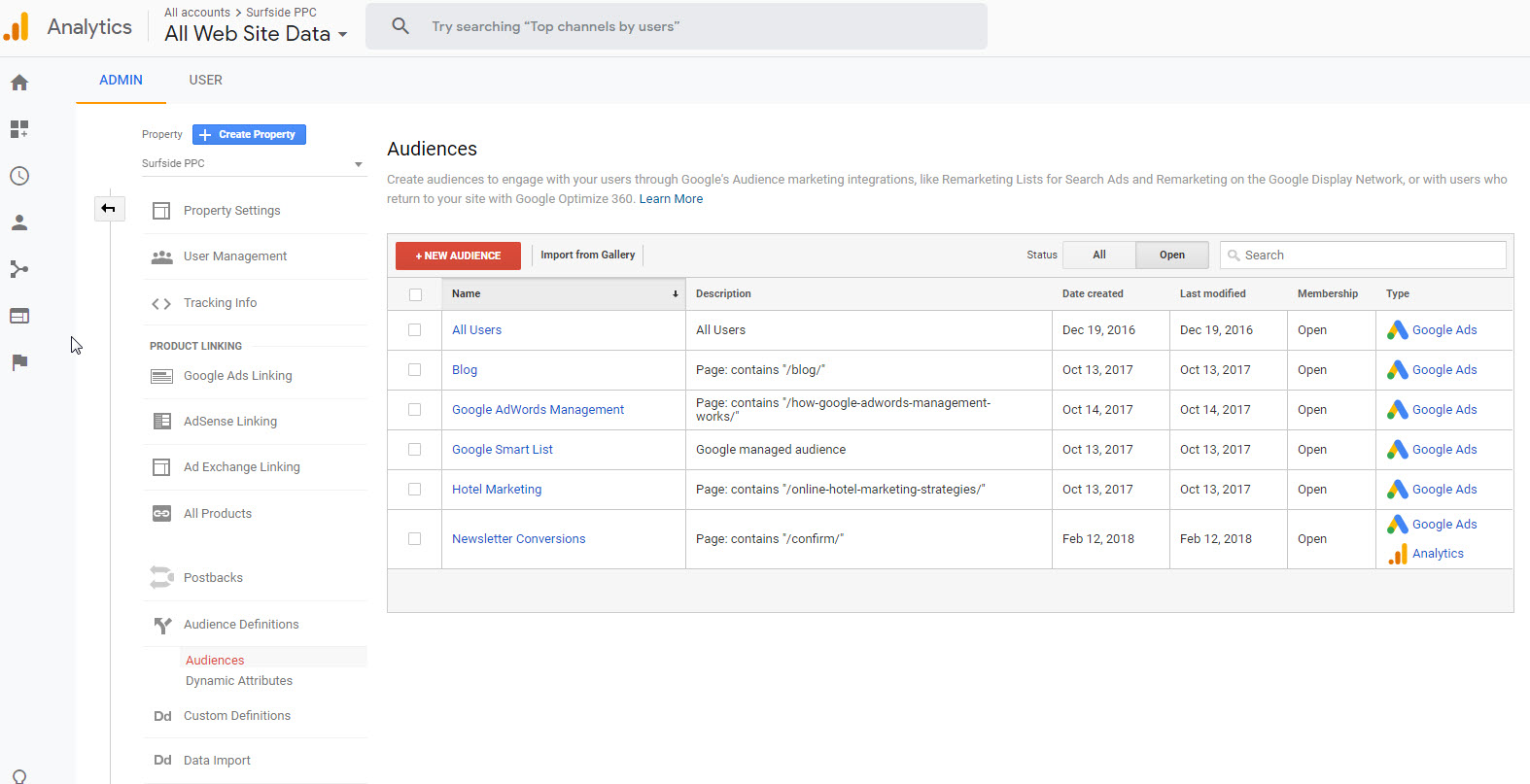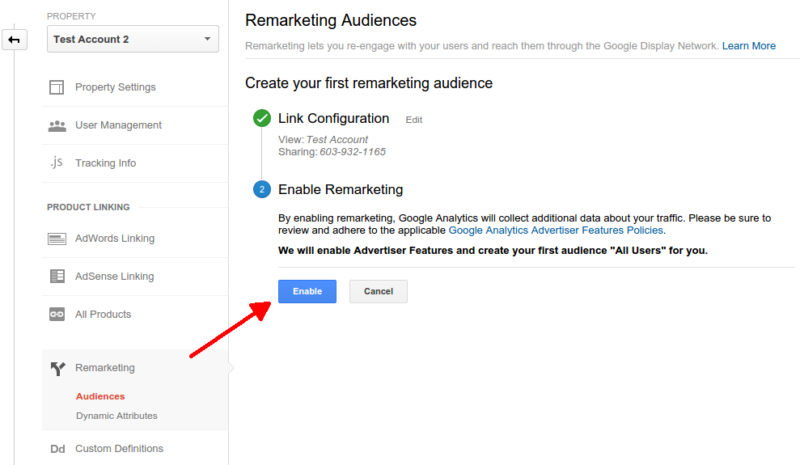Comprehending the Power of Remarketing In Google Analytics
Comprehending the Power of Remarketing In Google Analytics
Blog Article
Taking Advantage Of Remarketing in Google Analytics: A Comprehensive Guide
Using remarketing in Google Analytics supplies organizations a critical side in getting to out to possible consumers. The capacity to target people who have actually already engaged with your site presents a distinct opportunity for tailored advertising initiatives. By recognizing exactly how to craft target market checklists and release them properly, organizations can significantly enhance their conversion rates. Nonetheless, the details of establishing and optimizing remarketing campaigns require a thorough understanding of target market segmentation and efficiency evaluation. This overview will certainly clarify the essential actions associated with taking advantage of the full potential of remarketing in Google Analytics, resulting in improved advertising and marketing results.
Recognizing Remarketing in Google Analytics
Remarketing in Google Analytics permits companies to purposefully target users that have actually previously engaged with their website or mobile app. By leveraging information from Google Analytics, businesses can develop customized remarketing checklists based on customer behavior, such as web pages visited, activities taken, or particular objectives achieved. This effective tool allows companies to re-engage with customers that have shown interest in their services or items, ultimately raising the chance of conversion.
Understanding the various types of remarketing methods is crucial for a successful project - What Is “Remarketing” In Google Analytics?. Google Analytics provides various options, consisting of standard remarketing, dynamic remarketing, and remarketing listings for search advertisements (RLSA) Each kind offers an one-of-a-kind purpose and can be tailored to satisfy certain marketing goals
Additionally, examining the efficiency of remarketing projects is essential for enhancing outcomes. Google Analytics provides important insights into the effectiveness of different remarketing techniques, enabling businesses to make data-driven decisions and fine-tune their targeting strategy. By continually readjusting and checking remarketing initiatives based upon analytics information, organizations can optimize ROI and drive success in their advertising efforts.
Establishing Remarketing Campaigns

After setting up audience lists, the next action is to link Google Analytics with Google Advertisements. By linking these two systems, services can flawlessly transfer audience listings from Google Analytics to Google Ads for remarketing objectives. This combination permits more specific targeting and far better project performance.
When the accounts are linked, organizations can produce remarketing projects in Google Ads using the audience lists formerly defined in Google Analytics. These projects can be personalized with specific advertisement creatives, messaging, and bidding strategies to successfully re-engage with previous visitors and drive conversions. By adhering to these steps, services can leverage the power of remarketing to improve their marketing efforts and increase ROI.
Utilizing Target Market Segmentation Strategies

Predefined sectors in Google Analytics enable you to quickly assess typical target market classifications like brand-new customers, returning customers, or users that completed a details goal on your site. Personalized segments, on the various other hand, allow you to develop unique sections based upon specific requirements that are very important to your organization objectives. Dynamic remarketing checklists automatically adjust based upon user behavior, showing customized ads to customers that have actually connected with your website particularly ways.
Studying Remarketing Efficiency Metrics
Upon examining the effectiveness of remarketing projects in Google Analytics, the evaluation of key efficiency metrics provides valuable insights into target market interaction and conversion prices. By diving right into metrics such as click-through rates (CTR), conversion prices, expense per acquisition (CPA), and return on advertisement invest (ROAS), marketing professionals can evaluate the success of their remarketing efforts. Assessing these metrics makes it possible for marketing experts to enhance projects, fine-tune target market targeting, and allocate budget plans efficiently to boost overall remarketing efficiency.
Optimizing Remarketing Methods
When refining remarketing approaches in Google Analytics, concentrating on target visit this website market division is paramount for accomplishing campaign success. By separating your audience into particular sections based on their behavior, demographics, or passions, you can tailor your ads a lot more effectively to each team. This targeted technique increases the possibility of engaging individuals that have currently shown rate of interest in your service or products, bring about greater conversion prices.
An additional crucial facet of optimizing remarketing techniques is continuously testing and refining your campaigns (What Is “Remarketing” In Google Analytics?). A/B testing different advertisement creatives, messaging, or offers can assist you determine what reverberates best with your audience and drives the most conversions. By evaluating the performance of these tests in Google Analytics, you can make data-driven choices to optimize your remarketing initiatives additionally
Moreover, leveraging dynamic remarketing can considerably enhance your campaign results. This feature permits you to reveal customized ads to customers based upon their previous interactions with your web site, showcasing solutions or items they have formerly watched. By supplying customized material to individuals based on their interests and habits, dynamic remarketing can aid increase interaction and drive conversions.
Conclusion
Finally, utilizing remarketing in Google Analytics is a tactical technique to target users who have actually previously engaged with a website. By developing personalized target market lists and utilizing target market division strategies, organizations can enhance remarketing projects for boosted conversion rates. Examining performance metrics and continually optimizing strategies are essential for maximizing the efficiency of remarketing efforts.
Google Analytics supplies various alternatives, including basic remarketing, vibrant remarketing, and remarketing checklists for search advertisements (RLSA)After setting up target you can check here market checklists, the following step is to connect Google Analytics with Google Ads. By connecting these two platforms, services can effortlessly transfer audience lists from Google Analytics to Google Advertisements for remarketing purposes.As soon as the accounts are linked, companies can develop remarketing campaigns in Google Advertisements making use of the target market lists formerly defined in Google Analytics.When refining remarketing methods in Google Analytics, concentrating on audience segmentation is vital for attaining campaign success.
Report this page